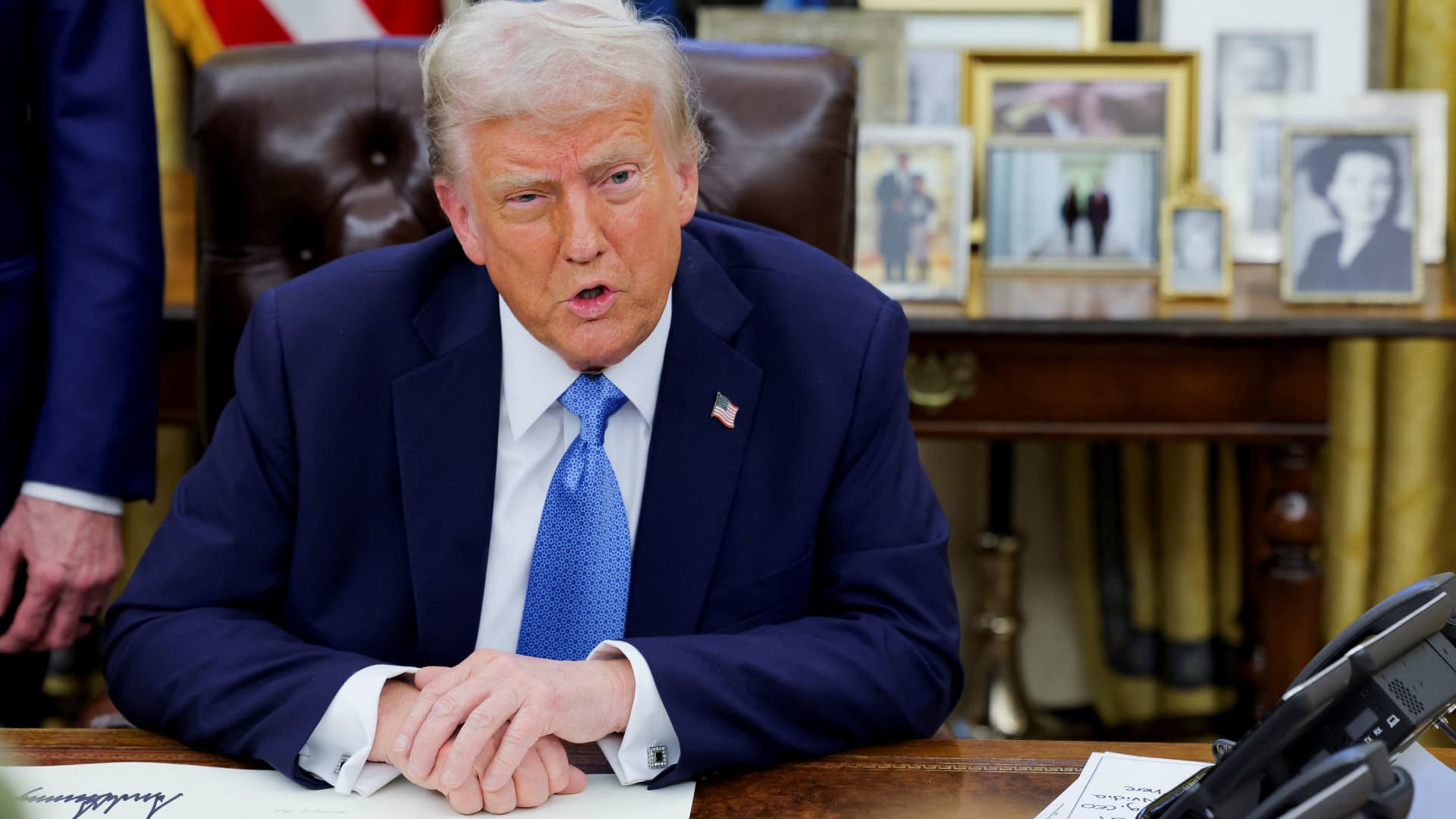U.S. President Donald Trump looks on as he signs an executive order in the Oval Office at the White House in Washington, U.S., Jan. 31, 2025.
Carlos Barria | Reuters
The former chair of the National Labor Relations Board in a new lawsuit Wednesday accused President Donald Trump of breaking the law when he fired her from the agency last week.
Lawyers for Gwynne Wilcox argue that she was removed from her post for a “political purpose” in a manner that violates the 90-year-old statute that established the NLRB.
Her lawsuit in Washington, D.C., federal court seeks an order reinstating her on the board and declaring that her firing was unlawful.
Created by Congress to enforce U.S. labor laws, NLRB is an independent agency with board members who are insulated from arbitrary removal. No member of the NLRB had ever been fired by a president, until Wilcox.
On Trump’s first day in office, he replaced Wilcox as the chair with another board member. A week later, both Wilcox and the NLRB’s top lawyer, Jennifer Abruzzo, were fired in a “late-night email,” according to the suit.
That email said she was being fired because the “heads of agencies within the Executive Branch must share the objectives of [Trump’s] administration.” Wilcox was appointed by former President Joe Biden, a Democrat.
The lawsuit calls this “a blatantly political purpose that flies in the face of the NLRB’s independent status.”
Wilcox argues that her firing did more than just violate the agency’s independence.
It effectively forced “an immediate and indefinite halt” to all of the NLRB’s regulatory activity.
At the time of Wilcox’s firing, there were already two vacancies on the five-member NLRB panel. Wilcox’s ouster leaves just two remaining members on the board, Marvin Kaplan and David Prouty.
With only two out of the five board seats filled, the NLRB does not meet the three-member threshold that it requires to continue operating.
Without a quorum of three, “no mechanism remains for resolving labor disputes” at NLRB, Wilcox’s lawsuit said.
This could be a positive development for the group of companies, including Elon Musk’s SpaceX, Amazon and other giants, that have argued in a slew of lawsuits that the labor board’s structure is unconstitutional.
A vocal opponent of labor unions, Musk was Trump’s largest campaign donor. The billionaire currently serves as a “special government employee” and the leader of Trump’s anti-bureaucracy effort, known as DOGE.
Musk and his lieutenants at DOGE are carrying out an unprecedented effort to reduce federal spending, moving through agencies and personnel offices and recommending that thousands of civil servants be reclassified, and in some cases, fired.
“We spent the weekend feeding U.S.A.I.D. into the wood chipper,” Musk wrote on X Monday, referring to the U.S. Agency for International Development.
There is currently no record of DOGE members visiting the NLRB or contacting the agency. The NLRB declined to comment on Wilcox’s suit.
Wilcox’s lawsuit also sets up a challenge over the extent of Trump’s power, as he and his aides, including Musk, rapidly attempt to unilaterally reshape and reduce the size of the federal government.
“The President’s action against Ms. Wilcox is part of a string of openly illegal firings in the early days of the second Trump administration that are apparently designed to test Congress’s power to create independent agencies like the Board,” her attorneys wrote in the suit.
They added that Wilcox is aware that “if no challenge is made, the President will have effectively succeeded” in defanging the protections of the longstanding labor law, “and, by extension, that of other independent agencies.”
Wilcox was sworn in as an NLRB member in August 2021, and was confirmed by the Senate in September 2023 for a second five-year term. On Dec. 17, Biden designated Wilcox chair of the board.
The lawsuit also noted that Wilcox was the “the first Black woman to serve on the Board.”
The National Labor Relations Act of 1935 specifies that the president can only remove the agency’s board members in cases of “neglect of duty or malfeasance in office,” and only after that member receives a “notice and hearing.”
Wilcox never received a notice and hearing, according to her lawsuit. And instead of identifying any neglect or malfeasance by Wilcox, the email noticing her removal allegedly cited Trump’s view that “heads of agencies within the Executive Branch must share the objectives of [his] administration.”






